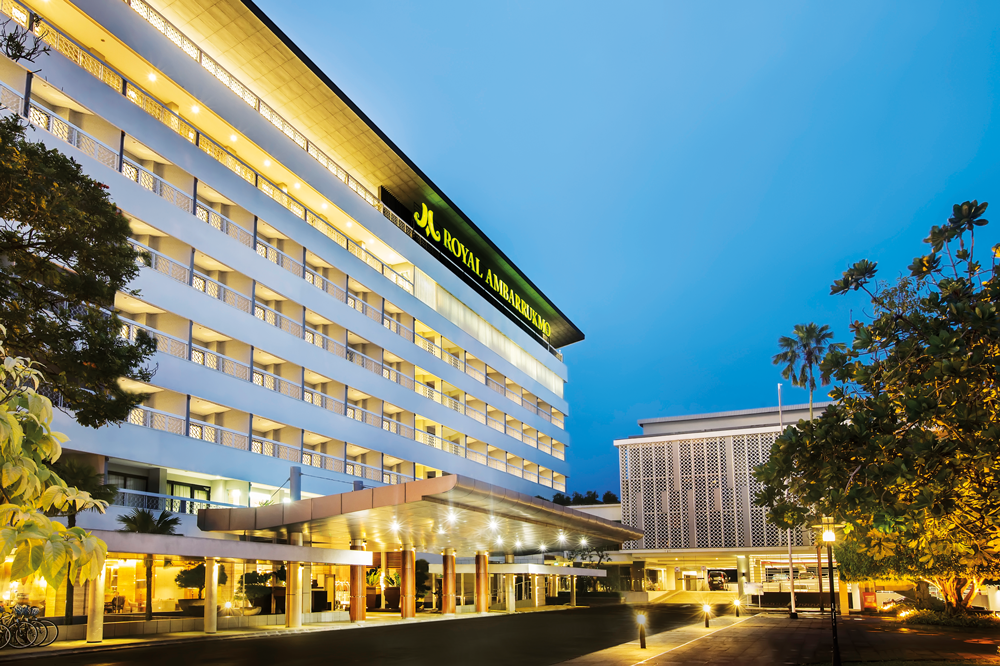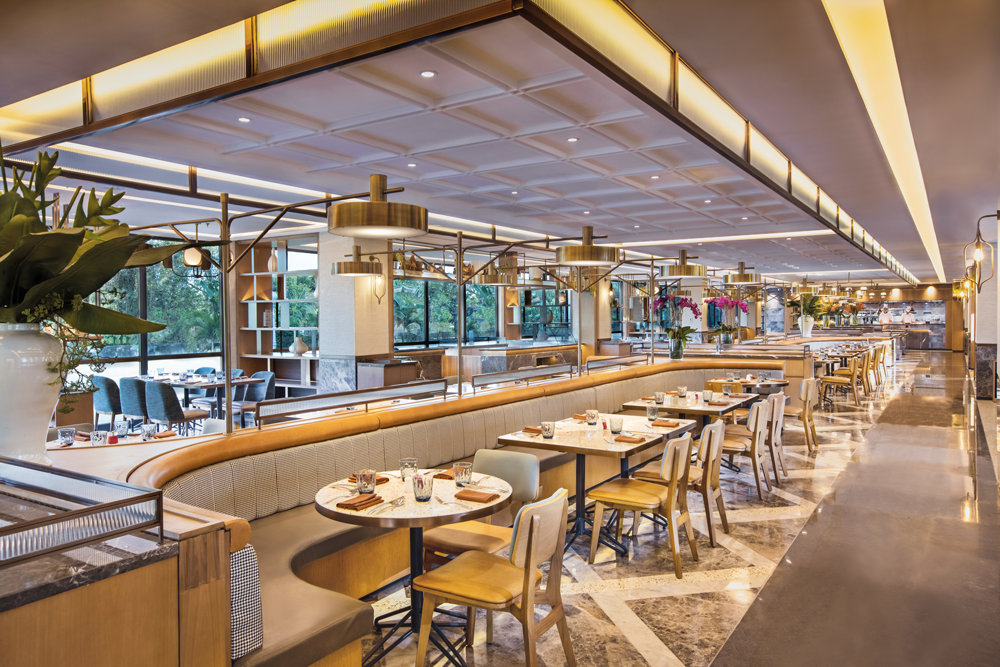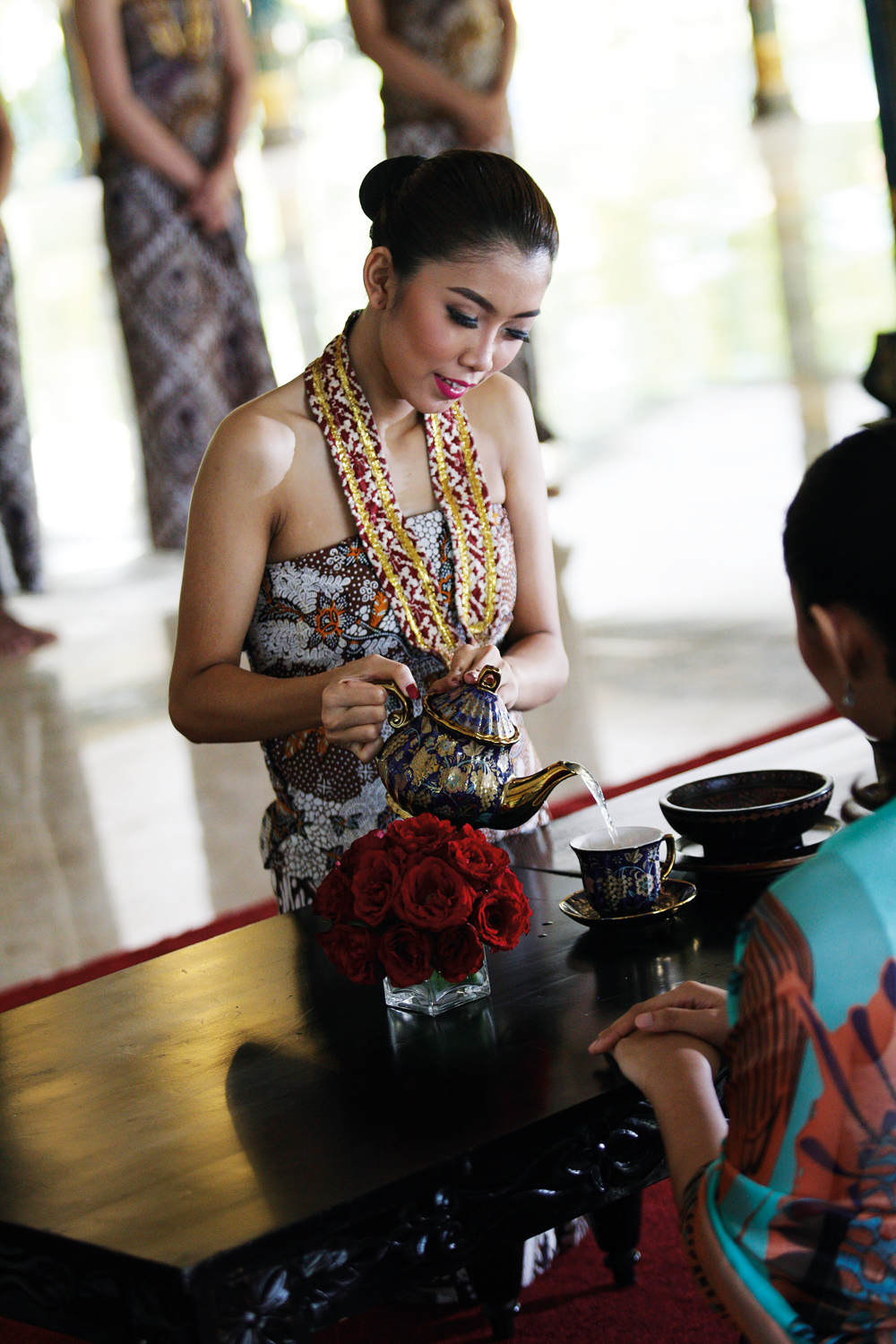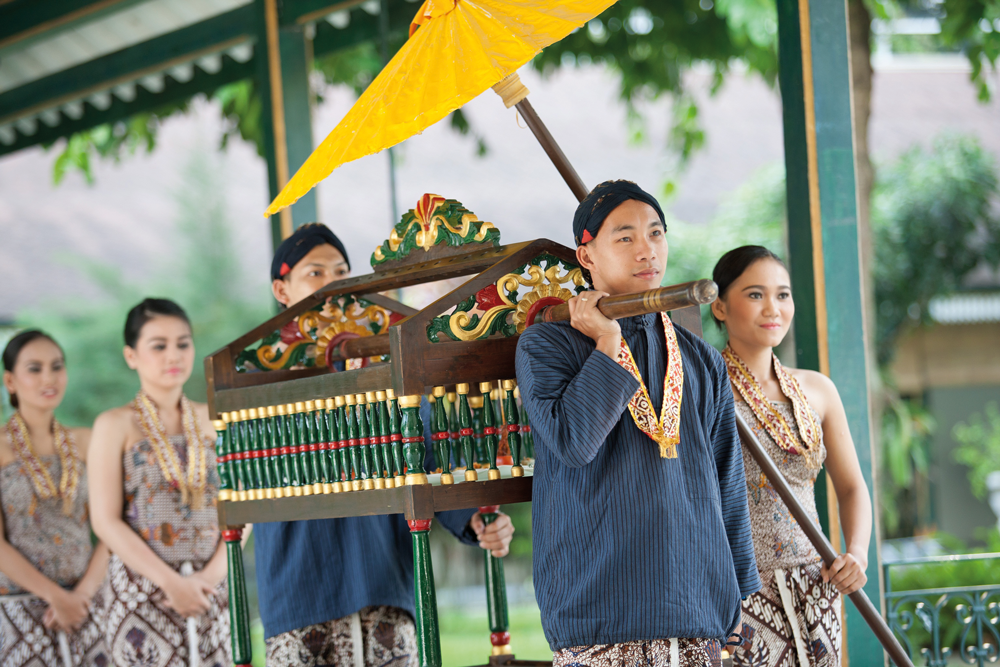During a stay at the historical Royal Ambarrukmo Yogyakarta, Eve Tedja discovers what makes the city special.
.png)
True to its name, Special Region of Yogyakarta is indeed, special. Situated under the mighty presence of Mount Merapi, the region is made up of five naturally blessed districts. With the sea in the south and the volcano in the north, it is understandable why the fertile land was chosen as the cradle of ancient civilisation that gave birth to the world’s largest Buddhist temple, Borobudur. But, there is more to this region than just the UNESCO World Heritage Site.
As I was driven through the capital city, it was abundantly clear to me that the very heart of the region lies within the Kraton Ngayogyakarta Hadiningrat. As the seat of the reigning Sultan of Yogyakarta, Hamengkubuwono X and his family, the vast royal complex is the embodiment and gatekeeper of the history, heritage and tradition of the region. Three thousand abdi dalem or royal caretakers pledged their devotion to the palace, voluntarily taking care of the household and its various programmes.
Established in 1755, the Sultanate of Yogyakarta has been a staunch supporter of the independence of Indonesia from the Dutch colonisation. During the reign of Hamengkubuwono IX and the nation’s struggle for independence in 1946, the capital was even temporarily moved to Yogyakarta until 1948. Royal Ambarrukmo Yogyakarta has been a silent witness to these historical changes and upheavals.
The hotel’s beginning can be traced back to its function as pendopo, a royal retreat built at the end of the 18th century. Over time, the humble lodge was renovated and enlarged, playing different roles as meeting hall, official royal residence and public service point in 1945. Indonesia’s first president, Soekarno appointed the property to function as the first world-class hotel in Yogyakarta and Central Java regions. It was only in 1966 that Ambarrukmo Palace Hotel finally opened as a hotel.

Despite its name change and adjustments to modern living, the historical grandeur of the palace remains. The hotel’s architectural façade represents modernity, juxtaposed with the well-preserved architecture of the Javanese royal palace. While the latest refurbishments at the lobby, Samazana Restaurant, Punika Deli and Royal Lobby Lounge & Bar successfully added contemporary elegance to the interior, it is the outstanding artworks that stopped me in my tracks. From a 1960s andesite stone relief depicting the village life under the shadow of Mount Merapi by Harijadi S. and members of Selabinangun Studio to the animal and human bronze sculptures made by the legendary artist Edhi Sunarso and Keluarga Artja in the garden, I find myself in awe of the hotel’s art collection.

“Wait until you see the mosaic on the eight floors,” says the concierge when he notices my fascination with the relief at the lobby floor. Created by J. Soedhiono and team, the floor-to-ceiling mosaic took four months to be completed. The awe-inspiring “The Life of Yogyakarta Society” visually showcases the history, tradition, rituals and art performances of the people in glorious detail.
MEAL FIT FOR A KING
Strolling through the hotel’s landscape, I can still feel the serenity that lured the royal family to retreat here three centuries ago. Despite having 247 rooms and suites, there are pockets of stillness to be had especially in what used to be the private areas of the royal family. The five-starred hotel receives royal patronage, allowing its guests to experience the privileges of some rituals, privy only to the royal family, which are still being observed in the palace.

The Patehan high tea ceremony at Gadri, the semi-outdoor royal dining room is one of those privileges and was the highlight of my stay. Located between Museum Ambarrukmo and the floating Bale Kambang, I witnessed a regal procession of costumed royal servants. Led by a lady carrying a parasol, each person carried a fabric covered tray, and upon arriving in the dining room, they gracefully kneeled and took turns to serve us in laku dodok, a ‘walk squatting’ position. One poured us a cup of tea while the others served an assortment of traditional snacks such as klepon rice cakes as well as coconut and palm sugar-drenched lopis triangle cakes in dainty plates. Slowly, they walked squatting backward and after a practiced bow, left us to feast. It is perhaps one of the world’s most choreographed high tea ceremonies; Patehan is truly a humbling spectacle.
.png)
The Bale Kambang, a two-storey water palace built in the middle of a pond, was formerly used for meditation and leisure by the royal family. Now, it offers a secluded spot for intimate Caos Dhahar Jodhang Luncheon for small groups, and I had the opportunity to experience that as well. A courteous procession of costumed servers climbed up the staircase to our level. Two of the strongest men carried the jodhang, a carved wooden palanquin on their shoulders. One by one, an array of the king’s favourite dishes were served on the table. Dutch-influenced and Javanese classic dishes were treats of the day. There was Tomato Soup as starter, Bistik Lidah (Beef Tongue Steak), Gecok Ganem (Coconut Soup Meatballs), and three kind of rice: white, red and yellow. Manuk Nom, a fermented glutinous rice pudding served with melinjo nut crackers - said to be the royal family’s favourite dessert - ended our meal on a satisfying sour, sweet and savoury note.
ROMANCING THE STONES
Apart from Borobudur, there are many other smaller and lesser-known temples to be explored. Situated 10 kilometres away from the city centre, The Prambanan Archaeological Park is a vast compound comprising Hindu and Buddhist temples. Dedicated to the triple deities, Prambanan Temple was dedicated to the Trimurtis: Creator (Brahma), preserver (Vishnu) and the transformer (Shiva) in Hinduism. It is the largest Hindu temple in Indonesia. Its tall and pointed forms, akin to the mountain, are visible from afar and look exceptionally lovely in the early morning light.
Nearby, a temple thought to have been built by a Hindu king for his Buddhist queen stood tall. As a tribute to love that conquers barriers from the ninth century, Candi Plaosan is one of those quiet destinations that beg to be explored at leisure. Two main temples has withstood the test of time and countless earthquakes, with the most recent in 2006. The impact of the quake is visible in the piles of stones that used to be stupas and shrines. Delicately carved reliefs of beautiful Tara deities and princely Boddhisatvas adorned the walls, charming their onlookers with serene smiles.

There are more temples to be explored in the north and south of Prambanan complex. Finding a temple which appeals to one’s aesthetic taste is part of the fun. Crowding will not be a problem in these outdoor man-made wonders, making it the ideal destination to practise social distancing. Having seen enough reliefs for the day, I spent my remaining time exploring the city’s art scene.
ARTFUL CONNECTION
Fondly known as the student’s city of Indonesia, Yogyakarta is greatly romanticised and immortalised in song lyrics and movies. Indonesians across generations went to its universities, found themselves and perhaps also lost their hearts, at some point. “Who knew what the spell was/ I believe there is something special in Jogja,” croons Adhitia Sofyan in a song about longing for a Yogyakartan girl who didn’t reciprocate his feelings. Despite its age-old tradition and heritage, Yogyakarta is also powered by youthful energy, thriving communities and an evolving art scene.
From award-winning filmmaker Garin Nugroho to visual artist Heri Dono, many Indonesian artists, thinkers and cultural observers can claim Yogyakarta as their birth place or source of major influence. Fuelled by the late-night coffee jaunts and scrumptious street food, creativity has always been given a wide space to grow here. ARTJOG, one of Indonesia’s biggest contemporary arts fair, is held here every year. Various art spaces, galleries, institutions, and studios are welcoming visitors – as long as they wear their masks and wash their hands. Perhaps it is only natural for art to be an inseparable identity of this city. Led by kings who were known to have choreographed dances and princesses who designed batik motifs, how could it be otherwise?
